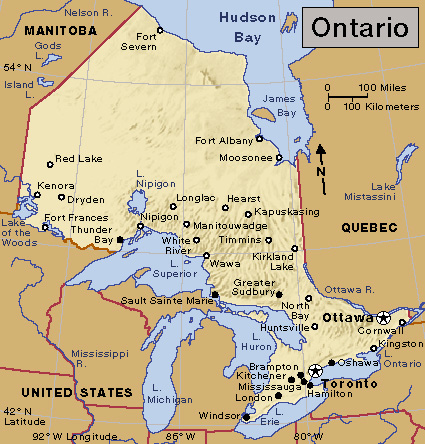Ottawa River is the chief branch of the St. Lawrence River and one of the most important streams of Canada. Great quantities of lumber float down the Ottawa from forests in the north.

The river begins in Quebec, about 160 miles (257 kilometers) north of the city of Ottawa. It flows west to the Quebec-Ontario border, and forms the border as it flows southeast. The city of Ottawa, Canada’s capital, stands along the river. The river ends its 696-mile (1,120-kilometer) course north of Montreal, where it empties into the St. Lawrence River.

Rapids and falls along the river make it unnavigable for large ships. But the rapids and falls also produce valuable hydroelectric power. Chaudiere Falls, north of the city of Ottawa, is the largest waterfall on the river. Dams and slides for large logs have been built on the Ottawa to aid the lumber industry. Canals built along the river once aided shipping. But they are now used only for pleasure boats. The Rideau Canal system connects the Ottawa River with Lake Ontario. The river was an early canoe route to the interior of Canada. The French explorer Samuel de Champlain explored the river during the early 1600’s.
